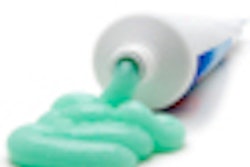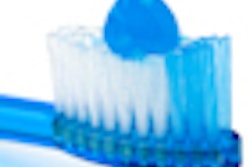Exposure to common antibacterial chemicals and preservatives found in toothpaste, mouthwash, soap, and other personal care products may make children more prone to food and environmental allergies, according to new research from Johns Hopkins Children's Center.
The study, published in the Journal of Allergy and Clinical Immunology (June 18, 2012), was funded by the National Institutes of Health.
Using data from a national health survey of 860 children ages 6 to 18, the researchers examined the relationship between a child's urinary levels of antibacterials and preservatives found in many personal hygiene products and the presence of immunoglobulin E (IgE) antibodies in the child's blood. IgE antibodies are immune chemicals that rise in response to an allergen and are markedly elevated in people with allergies.
The researchers noted a link between level of exposure, measured by the amount of antimicrobial agents in the urine, and allergy risk, indicated by circulating antibodies to specific allergens. However, the findings do not demonstrate that antibacterials and preservatives themselves cause the allergies; rather, they suggest that these agents play a role in immune system development, the researchers noted.
In the study, those with the highest urine levels of triclosan had the highest levels of food IgE antibodies, therefore the highest allergy risk, compared with children with the lowest triclosan levels. Children with the highest urinary levels of parabens were more likely to have detectable levels of IgE antibodies to environmental allergens like pollen and pet dander, compared with those with low paraben levels.
The team initially zeroed in on seven ingredients previously shown to disrupt endocrine function in lab and animal studies: bisphenol A (BPA) and triclosan, benzophenone-3, and propyl, methyl, butyl, and ethyl parabens. Interestingly, triclosan and propyl and butyl parabens, all of which have antimicrobial properties, were the only ones associated with increased allergy risk in the current study, the researchers noted.
Children with the highest urine levels of triclosan had nearly twice the risk of environmental allergies as children with the lowest urinary concentrations. Those with highest levels of propyl paraben in the urine had twice the risk of an environmental allergy. Food allergy risk was more than twice as pronounced in children with the highest levels of urinary triclosan as in children with the lowest triclosan levels. High paraben levels in the urine were not linked to food allergy risk.
To clarify the link between antimicrobial agents and allergy development, the researchers are planning a long-term study in babies exposed to antibacterial ingredients at birth, following them throughout childhood.



















